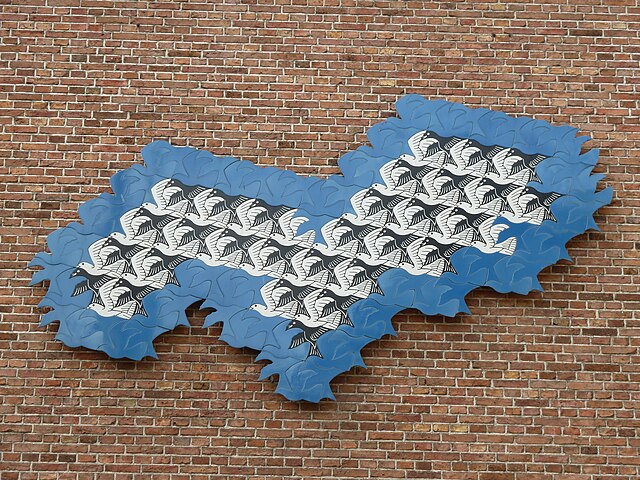A Pythagorean tiling or two squares tessellation is a tiling of a Euclidean plane by squares of two different sizes, in which each square touches four squares of the other size on its four sides. Many proofs of the Pythagorean theorem are based on it, explaining its name. It is commonly used as a pattern for floor tiles. When used for this, it is also known as a hopscotch pattern or pinwheel pattern,
but it should not be confused with the mathematical pinwheel tiling, an unrelated pattern.
Street Musicians at the Door, Jacob Ochtervelt, 1665. As observed by Nelsen the floor tiles in this painting are set in the Pythagorean tiling
A tessellation or tiling is the covering of a surface, often a plane, using one or more geometric shapes, called tiles, with no overlaps and no gaps. In mathematics, tessellation can be generalized to higher dimensions and a variety of geometries.
Zellige terracotta tiles in Marrakech, forming edge‑to‑edge, regular and other tessellations
A wall sculpture in Leeuwarden celebrating the artistic tessellations of M. C. Escher
A temple mosaic from the ancient Sumerian city of Uruk IV (3400–3100 BC), showing a tessellation pattern in coloured tiles
Roman geometric mosaic





